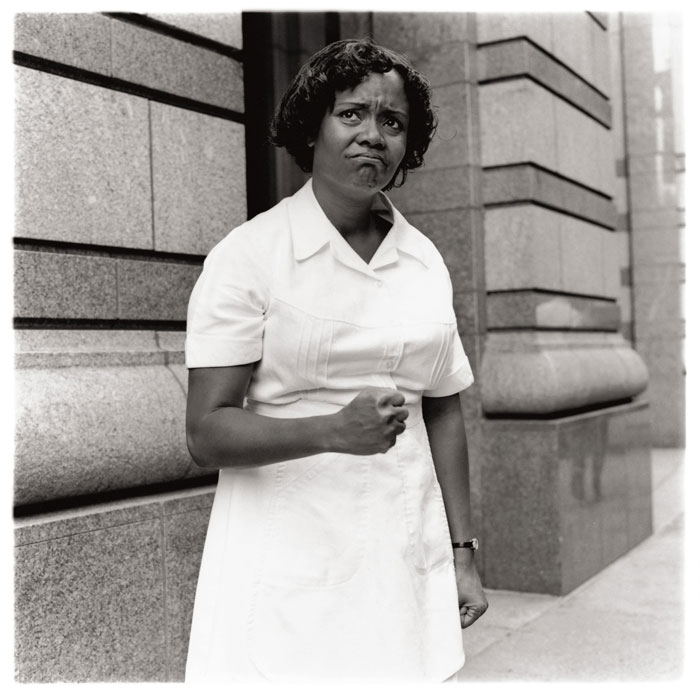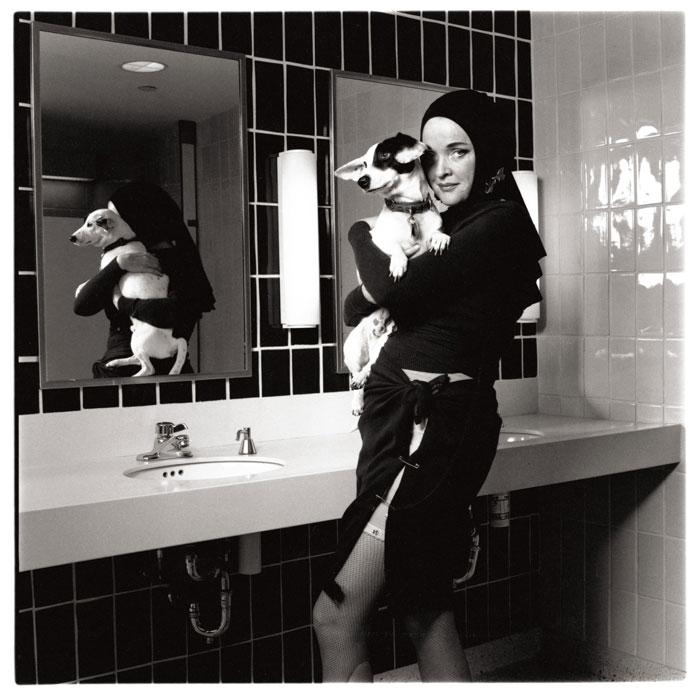The Fourth Wall
Amy Arbus brings some of Broadway’s most recognizable actors from the stage to the streets, fully costumed and in character.

Interview by Heather Rasley
What motivated this project?
I was visiting my family in Los Angeles. They’re part of a theater group called Interact and they were staging a production of “Guys and Dolls.” I asked to photograph at a matinee, during a performance. The way the theater was set up, they got into makeup and costume in a trailer and they had to come outside to go into the theater itself. I pulled them aside next to a blank wall and made images of them.
What struck me about the images was that they were of actors, but they weren’t like production stills with theatrical lighting on a set, and they weren’t like headshots, which are sort of an aggrandized version of what the actor looks like. They were outside in a place that was unidentifiable, in this period clothing. They looked like real people. They looked like fictional characters come to life.
All of a sudden, the balance had changed. The idea of identity was somehow challenged by this. What makes us more real than them? The actors are inhabiting these characters so fully that they are believable. Continue reading ↓
All images © Amy Arbus, courtesy Welcome Books.









Interview continued
The book is interesting because the text describes the plays, but doesn’t touch on the photos. Do you see this format as a way to make theater more accessible to those who might be drawn only to the photography?
We did the synopses of the play to give some sort of context, because not everyone knows each play. Not even theater buffs know each play. But beyond that, yeah, I think they’re interesting as photographs themselves because they have this weird timelessness and place-lessness. You have no idea what year these images were taken in, which is one of the many reasons I chose black-and-white.
The locations were intentionally anonymous. Such a simple thing of taking an actor outside, out of the set, had such a strong effect on the nature of the photograph. I think it also liberated the actors to be in front of a camera and not feel as concerned about how they looked. Because they were still the character, they were less self-conscious about how they were going to appear in the photograph. That’s a great premise of the portrait—to somehow liberate the person from their anxieties about looking good.
What’s next for you?
I love this project so much that I can’t bear to stop working on it. But I’ve got some ideas that are percolating. There are a couple of things I’ve got going that haven’t come to fruition yet. They’re still in embryonic stages. One project is “Rites and Rituals,” which is about public ceremony. That is an ongoing piece that I will do for years, but I don’t think that one will be the next one to come out. I think that’s a much longer-term project. So we’ll see. I don’t know. I’m testing about. I’m going to the next stage.
